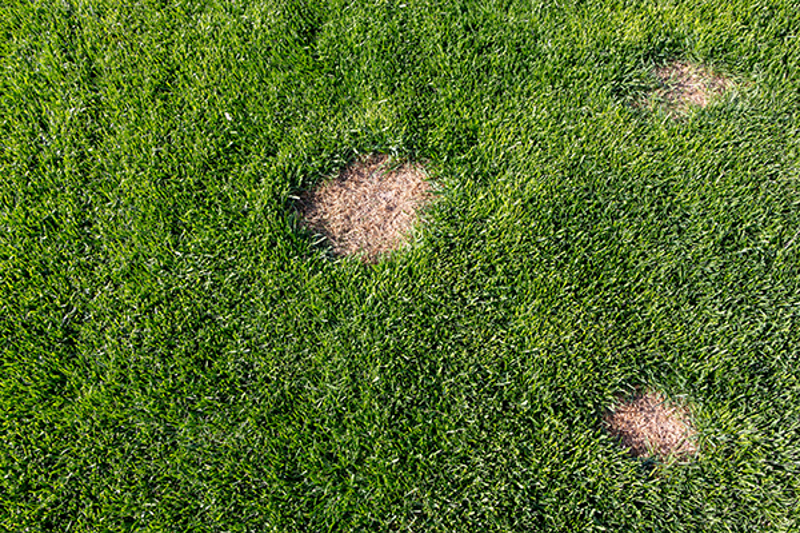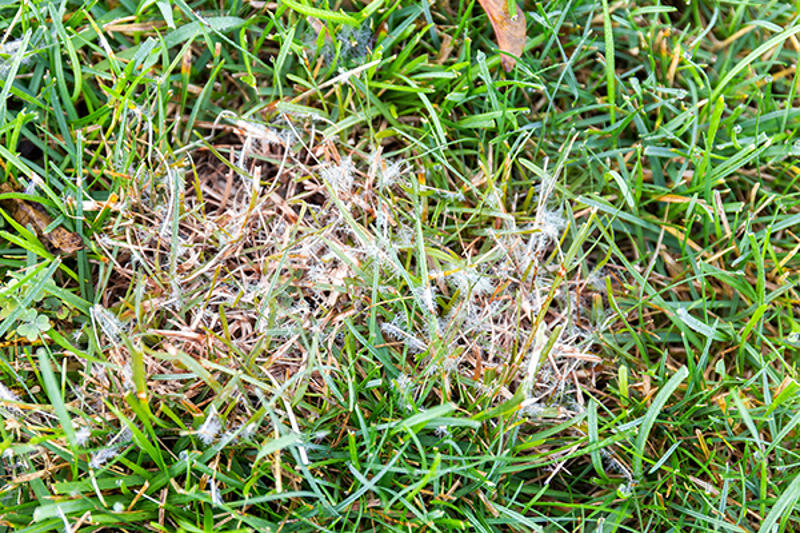Yates Account
Join now
Create a Yates account today!
Sign up to join the Yates Garden Club for monthly e-mails packed with seasonal inspiration, tips for success & exclusive promotions.
Plus if you’re a Garden Club member you can take part in the Yates Growing Community - a blog to share successes, get advice & win prizes in fun challenges along the way!

Forgot password
Enter the email address associated with your account, and we'll email you a new password.
Clarireedia spp.

What is Dollar Spot?
Dollar Spot is caused by a fungus. It usually occurs in late spring, summer or autumn, especially when the weather is consistently warm and humid (and lawns remain wet overnight). This disease is most prevalent in the upper North Island.
Symptoms
Dollar Spot is very similar in appearance to Brown Patch, but the spots usually remain small (less than 8cm across) and circular. Spots often appear in clusters. Dollar spot affects all grass types, with lawns recovering from drought stress being especially susceptible.
In the early stages, if the lawn is wet the cobwebby mycelium of the fungus can be observed over the affected area.
The disease progresses to cause distinctive light-coloured blotches with reddish edges, visible on individual grass blades.

How to protect your plants
Apply Yates Fungus Fighter to directly control dollar spot infections.
Lawns should always be watered in the morning so they dry well before nightfall. Excess moisture increases the risk of dollar spot.
Keep lawns well fed; poor lawn nutrition and stress are classic contributing factors to dollar spot.
For smaller lawns, aerate the lawn by spiking it with a garden fork. Simply push the fork in to at least 10cm and wriggle it back and forth to create larger holes. Do this every 10-15cm.
Compacted and heavy clay soils can also increase the risk of dollar spot. Applying gypsum to your lawn can help break up the clay, improving drainage and improving your soils porosity (ability to breathe).
Too much thatch can create ideal conditions for dollar spot, by increasing humidity at the grass roots. Thatch needs to be removed by ‘de-thatching’ or scarifying. It's done by mowing the lawn at a low level (this can be completed over several mows, lowering the mower at each cut) or very vigorously raking the lawn with a strong rake (sometimes called a thatching rake). Lawn scarifier machines are also available from hire merchants.
De-thatching established lawns is best carried out from mid-spring to early summer, so the weather is warm enough to encourage new grass growth.
It's highly recommended to disinfect your tools with isopropyl alcohol after aerating or de-thatching, to avoid spreading fragments of mycelium around.
Plants impacted
- Lawns
- Turf













Share
Share this article on social media